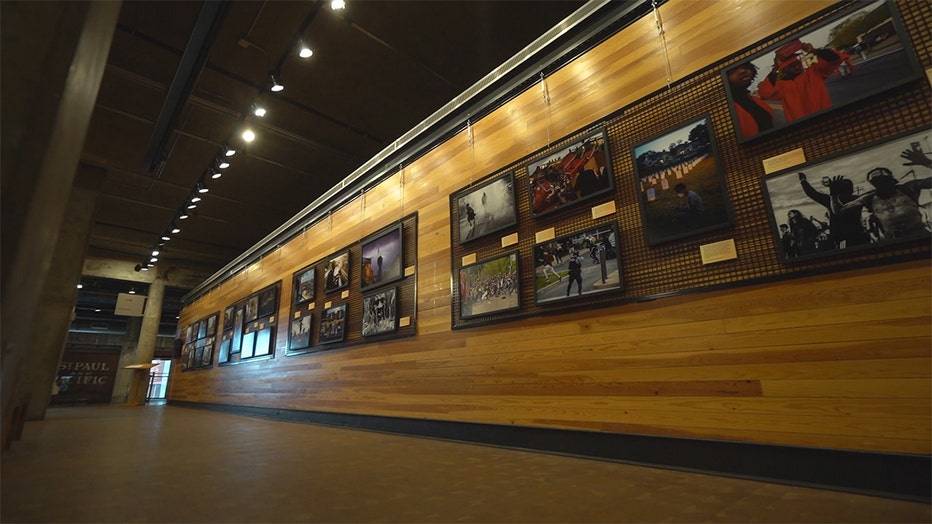‘Documenting a Reckoning’ now on display at Mill City Museum

?Documenting a Reckoning? now on display at Mill City Museum
A new 54-photo exhibit features images taken by professional photojournalists and everyday people who captured photos of protests, unrests and demonstrations ? from the day George Floyd was killed, to the day Derek Chauvin was convicted of murder.
MINNEAPOLIS (FOX 9) - A new 54-photo exhibit features images taken by professional photojournalists and everyday people who captured photos of protests, unrests and demonstrations – from the day George Floyd was killed, to the day Derek Chauvin was convicted of murder.
A group of three judges who looked at more than 500 photos from 81 photographers put the exhibit together.
Regina McCombs, a fellow with the Hubbard School of Journalism at the University of Minnesota, was one of the judges. She says the photos they selected show a wide range of emotion from different time periods following Floyd’s death.
"There was tragedy, there was community, there was sadness and bonding, there was just a huge range of emotions and things that went on and we were really looking for images that represented that entire range," McCombs told FOX 9.
The exhibit starts with a photo taken by Rachel Austin, a Minneapolis-based photographer that specialized in family and newborn photos. She and her family live three blocks from 38th and Chicago and on Memorial Day she took a photo of her son, Hezekiah, in their alleyway, draped in an American flag. The photo was taken a few hours before Floyd was killed.
"To have it at the beginning of the exhibit kind of shows the calm before the storm," Austin said.
In the days and weeks that followed, Austin turned her lens to what was happening in her neighborhood. She took photos of protests, the evolving memorial at 38th and Chicago, now referred to as George Floyd Square, and her family’s participation in the demonstrations leading up to Chauvin’s conviction.

A new 54-photo exhibit features images taken by professional photojournalists and everyday people who captured photos of protests, unrests and demonstrations – from the day George Floyd was killed, to the day Derek Chauvin was convicted of murder.
"I hope that with my camera I can help capture images that will make it easier for my kids to remember and tell their friends and their kids one day what happened in May 2020," Austin said.
It wasn’t just local photographers and journalists that were capturing what was unfolding in Minneapolis at that time. People from around the country and around the world came to the city to gather their own photos.
One of those people was a freelance journalist based out of Washington D.C. named Serkan Gurbuz. He flew out to Minneapolis on his own, without an assignment, to capture photos and share them with a wire service.
"I’m sure some people saw the video [of Floyd’s death] and came to protest and, as a journalist, I came to document," Gurbuz said.
One of his photos in the exhibit shows a photo of a Minnesota State Trooper standing over a man. Much of the frame is obstructed by clouds of tear gas.
"It’s not very clear. It has that feeling of exactly what I was seeing. You can barely see the sunset behind the frame itself. The photograph itself is filled with tear gas," Gurbuz said.
He says he submitted his photo for the exhibit because he recognizes how daily news images are part of collective history. Displaying that collective history is one of the goals of the organizers of the exhibit.
"I think it’s important because it happened. There’s no getting around the fact it happened and it was awful, yet good came out of it and we had conversations in this city that we’ve never had before and hard conversations and I think that’s still ongoing," McCombs said.
Click HERE to learn more about the project.
The exhibit is on display at the Mill City Museum in Minneapolis until June 5th.

